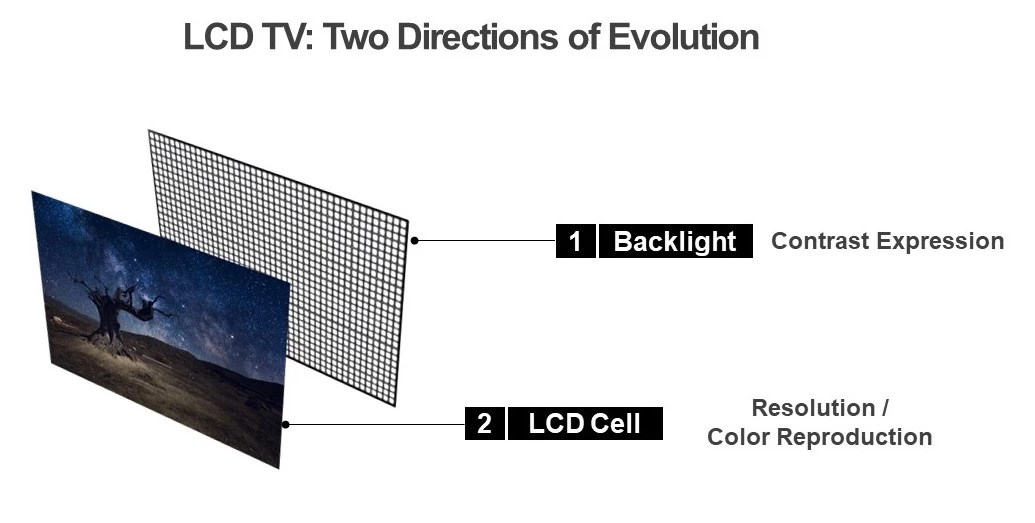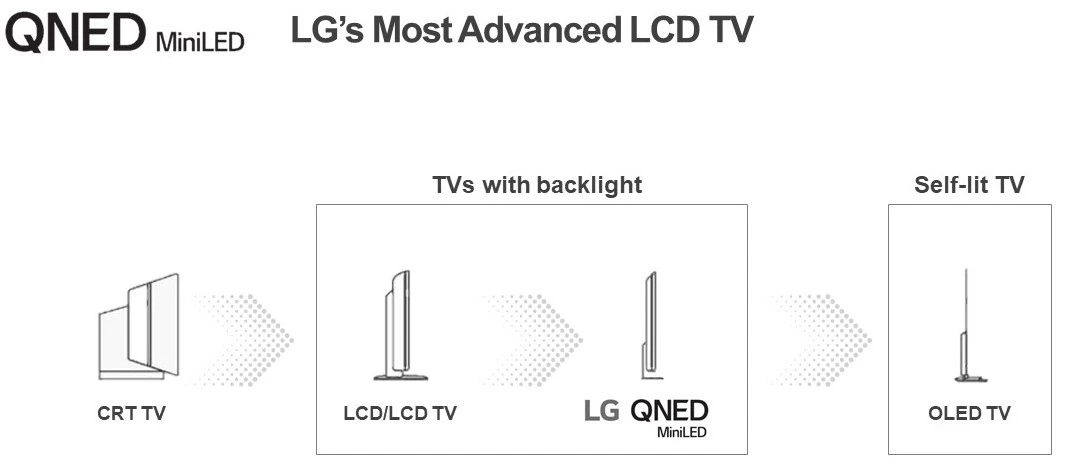It wasn't all that long ago that TVs came in just one flavor – CRT, or cathode ray tubes. These bulky units were superseded by flat screen plasmas and LCDs, with LCD winning that particular battle despite plasma being capable of producing a superior picture, especially when it comes to black levels and contrast.
OLED TVs addressed many of the shortcomings of LCD TVs, offering perfect blacks and an infinite contrast ratio. But OLEDs remain expensive compared to their LCD counterparts and they still have a risk of burn in (albeit a risk that has decreased in later model TVs). Also, they are not capable of the same brightness levels as LCDs, a factor that can have an impact on a showroom floor.
So, in addition to looking for alternative technologies, such as Samsung with its MicroLED TV, manufacturers have been searching for ways to improve the picture quality of LCD TVs, with a focus on improving contrast and black levels. Since LCD is a transmissive (requiring a separate backlight behind the LCD panel) rather than an emissive technology (such as OLED where the individual pixels light up), an approach known as local dimming is a common in the quest for deeper blacks.
Because LCD panels are unable to block all the light coming from the backlight, their blacks aren't really black and can looked washed out. This is where local dimming comes in, by attempting to prevent the light reaching LCD panel in the first place. There are a couple of ways this is done, with Full-Array Local Dimming (FALD) offering the best results.

FALD involves an array of LEDs behind the panel serving as the backlight, with the individual LEDs able to be turned on or off depending on the picture being displayed. However, because the LEDs cover a much larger area than the individual LCD pixels, pictures with a mix of light and dark areas exhibit a glow around bright objects on a dark background, known as "blooming." FALD sets are also relatively bulky and expensive, and their performance is dependent on the number of dimmable zones of the backlight array.
Hisense has developed a new take on local dimming with its Dual Cell technology, which sees two LCD panels positioned in front of the backlight instead of one. At the front is a standard color LCD panel, but behind that is a monochrome LCD panel that is designed to selectively block the light from the backlight reaching the color LCD panel. The end result is a TV capable of the brightness of an LCD and blacks approaching that of an OLED. However, blooming is still visible with this technology.
LG's new QNED Mini LED TV lineup, which it is introducing at CES 2021, essentially puts FALD on steroids. Whereas FALD sets generally have a couple of hundred or so individual dimming zones, and TCL's Series 8, which also uses mini LEDs, boasts up to 1,000, LG's new QNED Mini LED TVs will pack nearly 2,500. This is possible thanks to the use of "almost 30,000" mini LEDs serving as the backlighting.
On a 4K TV, that still comes to around one LED for every 3,300 pixels, and one LED for every 13,270 pixels on an 8K TV. While that should provide much more precise illumination than any other LCD on the market, it remains to be seen just how effective it is at reducing blooming.
LG says its sets will offer a contrast ratio of 1,000,000:1 alongside "incredible peak brightness" and "incredible accurate colors" thanks to the mini LED backlighting being paired with quantum dot color and LG's NanoCell technology. This combination results in the initialism-heavy mouthful of LG QNED Mini LED TV. Just how well the new TVs perform is something that can only be judged in person, but with CES 2021 being an all-virtual event, it might be a while before the verdict is in.

Ten models will be released in 2021, including 4K and 8K sets with 120-Hz refresh rates and screen sizes up to 86 inches. LG hasn't given pricing but is positioning its QNED Mini LED TVs as its premium LCD offerings so expect them to carry an equally premium price tag. That said, LG is still positioning its OLED models as the "pinnacle" of its TV offerings, and rightfully so.
LG will no doubt provide more details when it officially introduces its QNED Mini LED TV at CES, which kicks off virtually on January 11.
Source: LG




